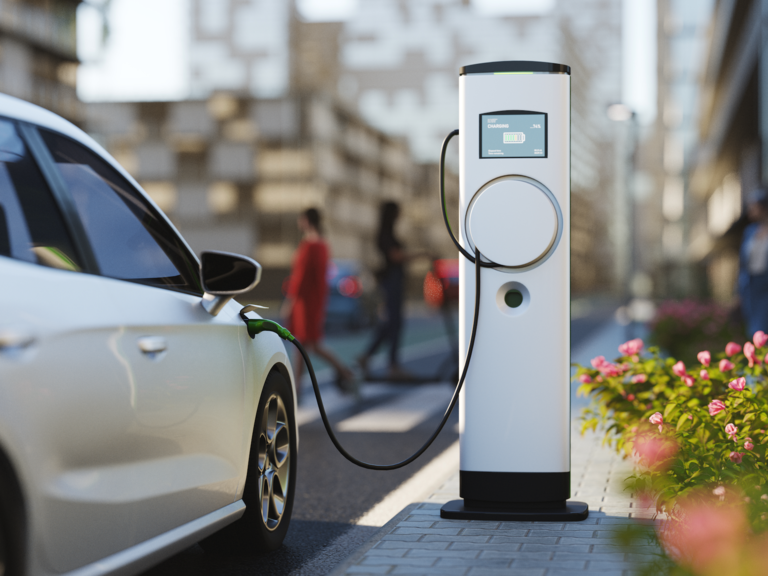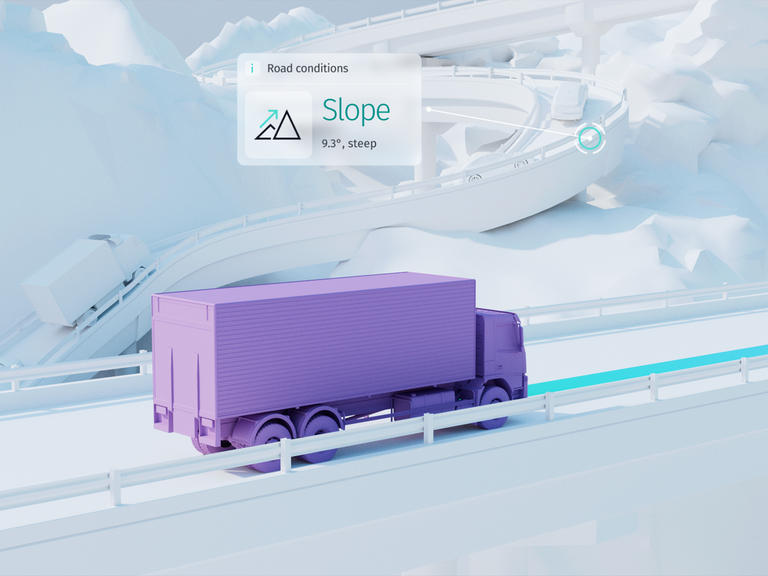EV does it: how AI will transform charging infrastructure

AI is revolutionizing many industries. How will its impact be felt on electric vehicle infrastructure, which faces many challenges as adoption grows?
Artificial intelligence (AI) and machine learning have taken the tech world by storm this year, thanks in part to advances in large language models such as Chat GPT.
But in many industries, including fleet telematics, they have been deployed behind the scenes for some time.
Their power lies in being able to crunch huge amounts of data to generate insights that humans could not possibly hope to do within the same amount of time.
The electric vehicle (EV) sector has experienced huge growth but infrastructure has struggled to keep pace in many regions, as the EV Index by HERE and SBD Automotive shows. Many also cite improvements in battery technology as vital for boosting the uptake of EVs.
In several ways, AI is a useful tool to help us tackle these challenges.

A sustainable system
EV charging stations could use as much electricity as a small town by 2035, according to a study by National Grid. The organization says that the electric grid in the US is not ready for this demand, particularly when fleets with their larger vehicles start electrifying. Some estimates add that EV charging could make up 30% of increased energy consumption by 2030.
The University of Michigan is using AI chips installed on EV charging stations to evaluate the impact of EV charging on the grid. The Utilidata chips collect data on real-time voltage, current and power data at the edge of the grid, allowing researchers to establish patterns in charging.
The team is also using vehicle monitoring devices to get information including start and stop time of charging and location.
Ultimately, AI could be used to analyze data such as traffic patterns, population density and projected rise in ownership of EVs to calculate where EV charge points should best be located. Location data is an important part of this mix.
Data about how charging stations have been used in the past can be used to predict future use, helping providers optimize resources. This has the potential to help us manage energy use so that unnecessary strain isn't put on the grid at peak times.
With an EV market share in 2022 of just over 7%, the U.S. as a whole should ideally have eight to nine EVs per public charger, with each state having its own ideal ratio based on several market maturity metrics.
Dynamic pricing, better batteries
One way to manage the pressure on the grid is to adjust prices according to demand and supply. Dynamic pricing could mean that users who charge at off-peak times get charged less, or that prices are reduced when renewable energy sources are in abundance and the price of electricity is generally low.
AI can facilitate this, using advanced algorithms to identify the most efficient charging schedules and adapt prices accordingly.
AI-mediated energy storage could also help to address an overall increase in energy use, with an intelligent, behind-the-meter solution using real-time and historical data analysis and predictive analytics to meet demand at the right times.
There have been other ways AI is touted to boost efficiency in EV charging. Some research has shown it has promise in improving battery testing and development, seen as critical to improving range in general.
Testing new batteries has traditionally taken many months, but a Stanford team has developed a method based on machine learning that can reduce the time taken on that process by 98%.
V2G (vehicle-to-grid) technology is another promising solution that allows EVs to discharge their stored energy back into the grid during high-demand periods. AI algorithms could power V2G, selecting the best moments for that to happen.
Europe is a great example of how each country approaches charging infrastructure in a different way and exists at a different point in time in the maturity of its EV market.
The EV Index by HERE and SBD Automotive shows a complex picture of infrastructure in the US and Europe. While some regions have high demand for charge points which is not being met, others have challenges generating enough power to supply their existing charge points. As AI is deployed across the network, it could be an important tool in boosting infrastructure everywhere and ultimately instilling confidence in EV consumers.
Have your say
Sign up for our newsletter
Why sign up:
- Latest offers and discounts
- Tailored content delivered weekly
- Exclusive events
- One click to unsubscribe


